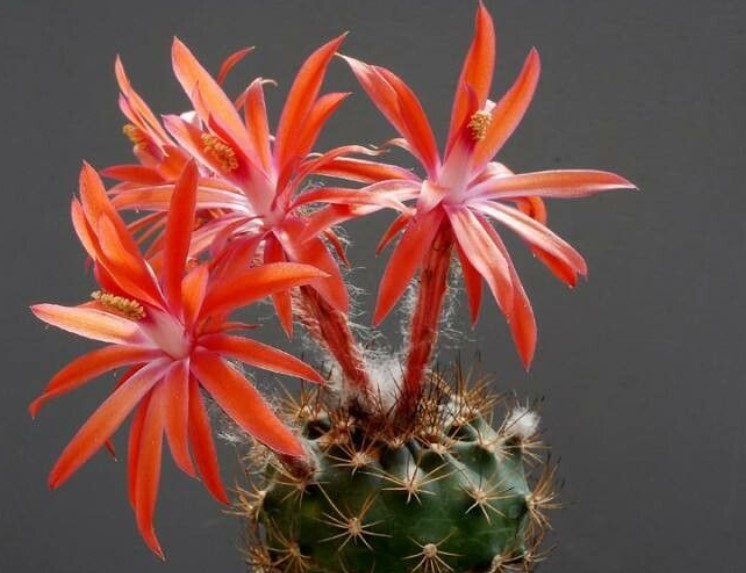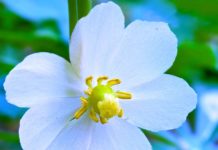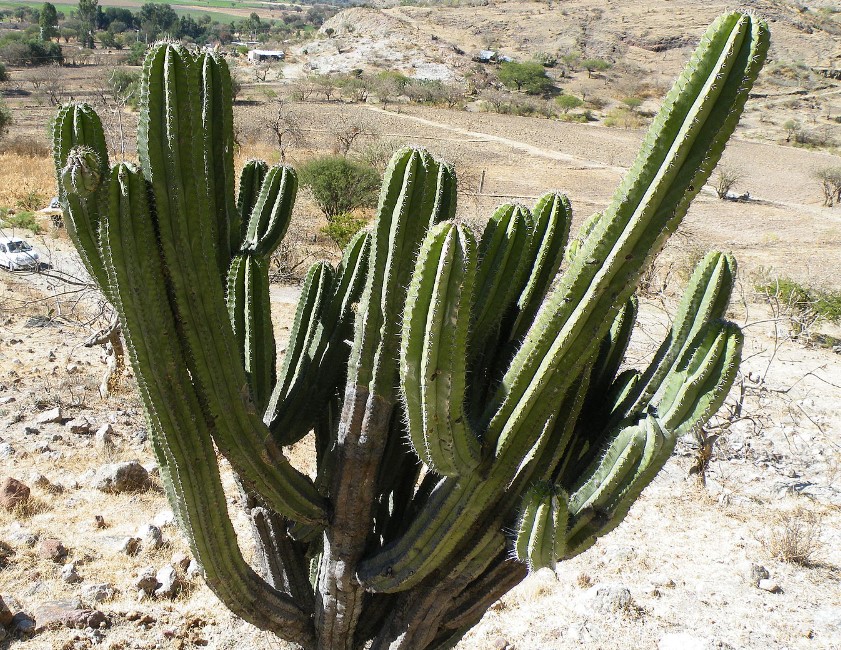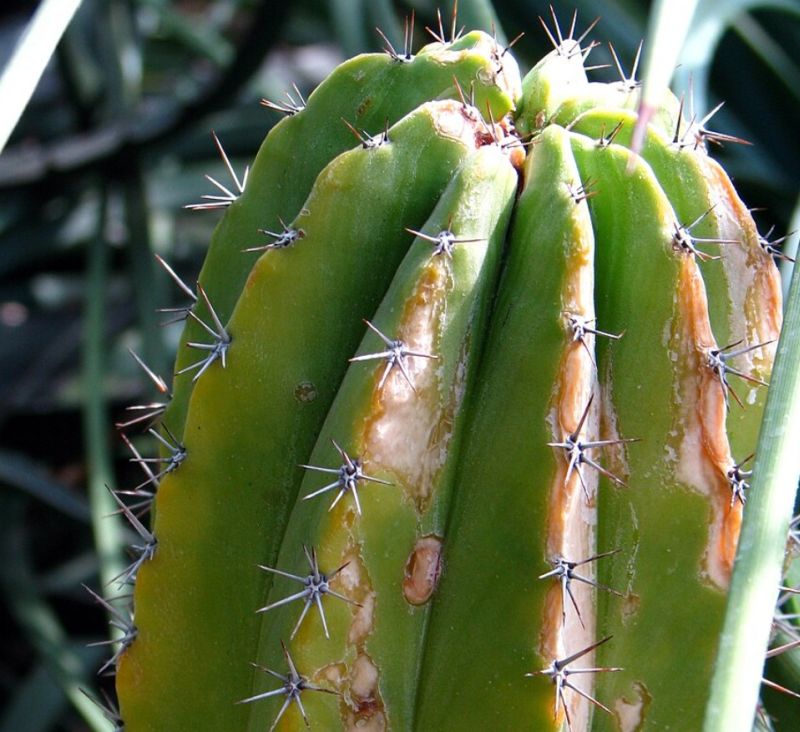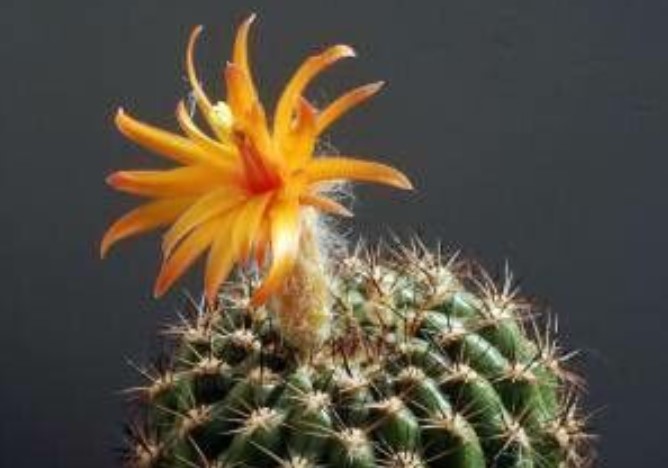Matucana krahnii is a species of matucana in the family CACTACEAE. There are more than five known locations in Peru where this cactus can be found, and all of them are in the Amazonas region. This gorgeous plant is ideal for adorning windowsills or patios.
The plant is usually solitary, occasionally branching basally. The stems of Matucana krahnii are flattened globose to short cylindrical, gray-green, 10–14 cm (3.9–5.5 inches) high, and 5–10 cm (2–3.9 inches) in diameter. The ribs are 10–18, broad, and have conical tubercles. The spines are yellowish brown, becoming gray with age, mostly curved, and flexible.
However, the central spines are about 1-4, 2–15 cm (0.8–4.9 inches) long. The radial spines are 8–15, 1.5–5 cm (0.6-2 inches) long.
Crimson flowers appear at the top of the stems in late spring and summer, opening at night and lasting two to four days. Although the flowers are straight to slightly curved and carmine red, they are 8.5 cm (3.3 inches) long and 7 cm (2.8 inches) in diameter. Flowers tend to tilt to one side.
The spherical fruits are globose, green, and up to 1 cm (0.4 inches) in diameter. It thrives in dry forests and, despite its decorative use, the population appears to be steady.
As far as distribution is concerned, it is found in the north of Balsas, Amazonas, Peru, at elevations of 1600–1750 meters (5400–5700 feet).
In 1979, John Donald Donald published the initial description of Borzicactus krahnii. It was named after Wolfgang Krahn, a German collector who discovered it in Peru’s Amazonas region in 1960. Rob Bregman placed the species in the genus Matucana in 1986.
Matucana krahnii is not difficult to grow if it is sheltered from freezing temperatures. It requires care in growing to reach a good size without developing unsightly blemishes, requires a minimum temperature of 10° C but may survive a little frost, and reaps the rewards from bright but not direct sunlight.
Matucana krahnii repots in the early spring when their roots grow congested; usually, they should be repotted every other year to offer fresh soil; nevertheless, this does not necessarily imply that they will require bigger spaces.
Read More: Matucana intertexta
